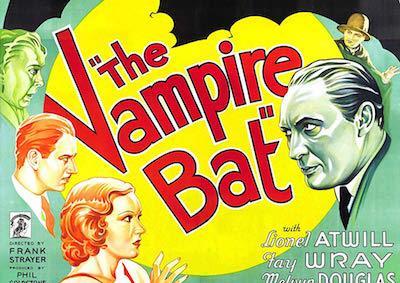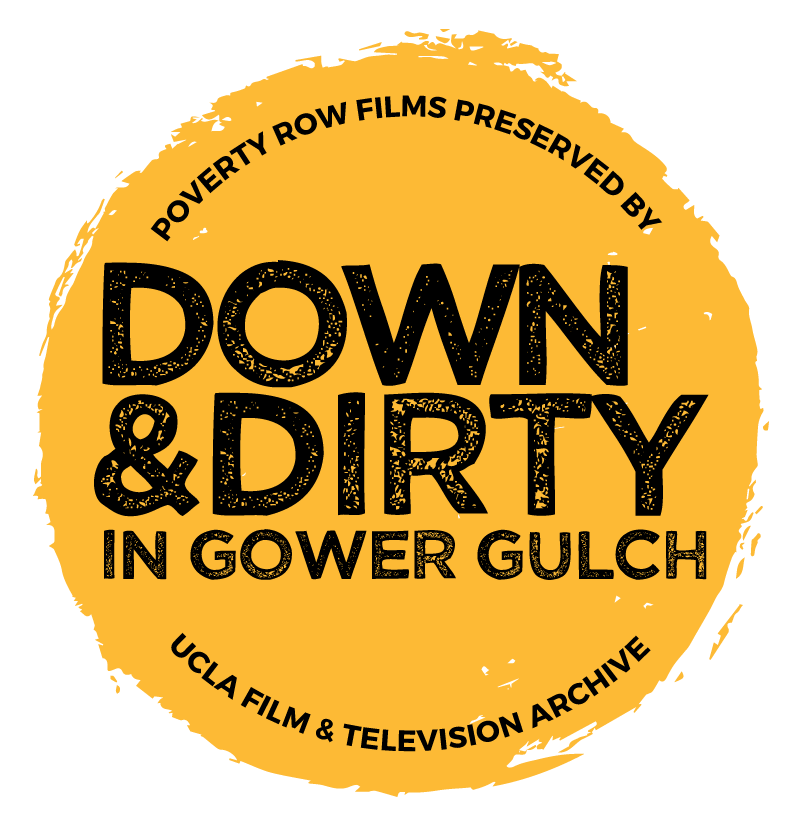Please note: this event takes place at Raleigh Studios in Hollywood. Tickets are available online only.
Purchase tickets to the gala and screening.
Purchase tickets to the screening only.
Fundraising Gala
6:30 p.m. Cocktail and Korbel Champagne reception
7:30 p.m. Dinner
9 p.m. Program featuring The Vampire Bat (1933) and
Illeana Douglas, granddaughter of Melvyn Douglas
Victoria Riskin, daughter of Fay Wray
Mark Rosenthal, CEO Raleigh Enterprises
Jan-Christopher Horak, Director, UCLA Film & Television Archive
Complimentary parking at Raleigh Studios for attendees.
Tickets must be purchased by 12 p.m. on Friday, October 26.
Restored by UCLA Film & Television Archive with funding provided by The Packard Humanities Institute
The Vampire Bat (1933)
Everybody loves Dr. von Niemann (Lionel Atwill), clueless that he is using a cover story of medieval vampirism to murder the proletariat of Kleines Schloss and gleefully feed their blood to the artificial being he has created (it looks suspiciously like a loofa sponge oxygenating in an aquarium).
Fiercely independent producer Phil Goldstone, former production head at Tiffany, organized Majestic Pictures with Herman Gluckman in the spring of 1932 with an ambitious slate of 20 productions. Goldstone promised exhibitors substantial budgets and he front-loaded his pictures with name talent like Pat O'Brien, Thelma Todd, Paul Lukas and Leila Hyams. A Carl Laemmle crony, Goldstone called in his chits at Universal where he had set up White Zombie (1932) for the Halperin Brothers, financed indie productions for Ken Maynard and Lou Ostrow, and funneled considerable work to Laemmle's lab from the Independent Motion Pictures Producer's Association. In doing so he guaranteed Majestic production facilities unknown on Poverty Row.
Goldstone did not miss a beat cashing in on the current fad for spooky movies, casting his actors from current horror hits: leading man Melvyn Douglas (The Old Dark House), moronic Dwight Frye (Frankenstein and Dracula), zaftig comedian Maude Eburne (The Bat Whispers), wooden soldier Robert Frazer (White Zombie), right down to bit player Rita Carlisle reprising her whining, bedridden invalid from Dr. Jekyll and Mr. Hyde. Goldstone's real coup was acquiring the Doctor X thrill team of Lionel Atwill and Fay Wray, already teamed again in the just-completed Mystery of the Wax Museum (which The Vampire Bat would beat into release by one month).
With this travelling circus of horrors traipsing through cast-off sets from The Old Dark House and Frankenstein, plus a day trip to Bronson Canyon, The Vampire Bat plays like a midnight matinee from the old Shock Theater TV package. It's foolish fun, mercifully brief and probably the best-remembered film from the prolific Frank Strayer, auteur of umpteen “Blondie” movies for Columbia. UCLA's restoration recreates the sensational Gustav Brock color sequence, unacknowledged and unseen since first run.
DCP, b/w and color, 63 min. Director: Frank Strayer. Production: Majestic Pictures Corp. Distribution: Capital Film Exchange. Produced by: Phil Goldstone. Screenwriter: Edward T. Lowe, Jr. Cinematography: Ira Morgan. Art Director: Daniel Hall. Hand colored sequence: Gustav Brock. Cast: Lionel Atwill, Fay Wray, Melvyn Douglas, Maude Eburne, George E. Stone.
Restored from a 35mm composite acetate fine grain master and a 35mm nitrate print. Laboratory services by The Stanford Theatre Film Laboratory, West Wing Studios, Inc., Fotokem, Audio Mechanics, Simon Daniel Sound, DJ Audio, Inc. Special thanks to: Stanton Rutledge, Bill Broderson, Andrew Oran.
Preceded by
Hearst Metrotone News, Vol. 4, No. 250 (1933)
Short newsreel.
Jack Frost (1934)
Animated short. Director: Ib Iwerks.






 Mobile Navigation
Mobile Navigation


